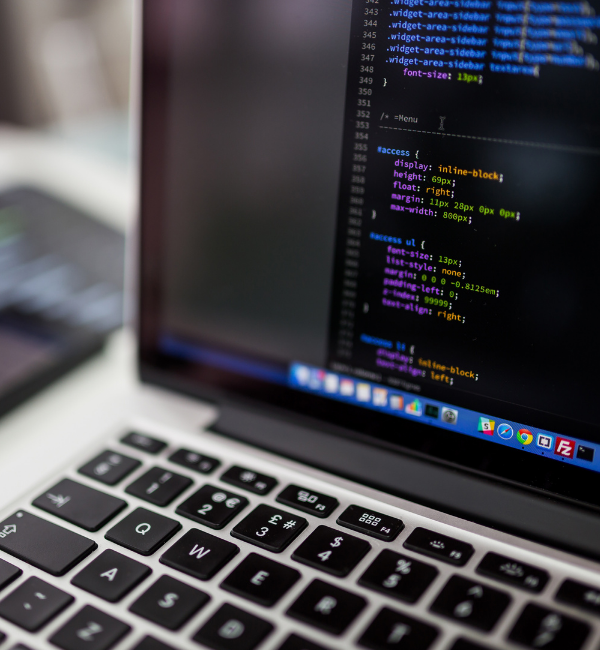Coding Unplugged


Students will learn some foundational programming concepts and develop computational thinking skills through several screen-free activities.
What You Need
Introduction
Activity 1: Code-a-friend
- Paper (1-2 sheets)
- Writing utensil
Activity 2: Team Coding a Character
- Tracing paper or parchment paper (can be cut smaller than 8.5 X 11)
- Pencil
- Optional: pencil crayons/crayons (markers will smudge)
Actvity 3: A-maze-ing Escape
- Coding Unplugged Activity Template (contains 4 completed maze options, 2 blank maze options and 3 pages of code text); choose as many as time permits.
- Small toy/character (about the size of a Lego minifigure or boardgame prize)
- Pair of scissors
- Coin (or dice or online simulator-anything that will give you a random result between two options)
Guide:
Safety Notes
For younger ages, ensure proper support is provided for cutting with scissors.
What To Do
Introduction
- Introduce the concept of coding and pseudocoding.
Activity 1: Code-a-friend
- Learners work in pairs to draft and follow step-by-step instructions to complete a task. Tasks that have multiple steps (like making a sandwich) are ideal.
- Ask the educator the best way to create pairs
- Allow learners approximately 3-5 minutes to write their instructions before giving them to their partner to follow
Activity 2: Team Coding a Character
- Learners work together in teams of 3 to draw a character or scene
- Ask the educator the best way to split learners into team
Activity 3: A-maze-ing Escape
Hand out mazes, characters, and coding text to learners
- Level 1: Learners will create a code of instructions to get out of a maze
- Level 2: Learners will shorten their code using loops and if/else statement
- Level 3: Learners will create instructions to get out of any maze
Discovery
Learners will explore some foundational programming concepts and develop compuational thinking skills through several screen-free (unplugged) activities.
Digital literacy, including coding, is becoming increasingly more important in a digitally driven world! It's a great way to introduce learners to the concept in an appropriate manner.
Try building a maze building out of blocks, tracing onto paper, laying out playing cards in a path.
Computer science 101: A great way to learn about how computers developed, and how programming evolved over time, is this "Crash Course" series on computer science.
- To skip ahead to learn more specifically about programming languages, start episode 12, here.
Computer programming, especially as a means of communicating to a computer which electrical signals should be off or on (i.e., what binary does in computers), can be traced back to Jacquard looms. Jacquard looms used long series of punched cards to automate weaving patters, and punched cards turned out to be such a simple and effective way of programming that computers used punched cards up until the mid 1980s.
Videos on Jacquard looms:
- https://www.youtube.com/watch?v=MQzpLLhN0fY
- https://www.nms.ac.uk/explore-our-collections/stories/science-and-technology/jacquard-loom/
Online Coding programs for kids:
Khan Academy
Coding Unplugged - Activity Overview
Coding Unplugged - Coding Text Sheets
Activity three was inspired by Coding a Lego Maze idea
What's Happening?
Learners will explore some foundational programming concepts and develop compuational thinking skills through several screen-free (unplugged) activities.
Why Does it Matter?
Digital literacy, including coding, is becoming increasingly more important in a digitally driven world! It's a great way to introduce learners to the concept in an appropriate manner.
Investigate Further
Try building a maze building out of blocks, tracing onto paper, laying out playing cards in a path.
Computer science 101: A great way to learn about how computers developed, and how programming evolved over time, is this "Crash Course" series on computer science.
- To skip ahead to learn more specifically about programming languages, start episode 12, here.
Computer programming, especially as a means of communicating to a computer which electrical signals should be off or on (i.e., what binary does in computers), can be traced back to Jacquard looms. Jacquard looms used long series of punched cards to automate weaving patters, and punched cards turned out to be such a simple and effective way of programming that computers used punched cards up until the mid 1980s.
Videos on Jacquard looms:
- https://www.youtube.com/watch?v=MQzpLLhN0fY
- https://www.nms.ac.uk/explore-our-collections/stories/science-and-technology/jacquard-loom/
Online Coding programs for kids:
Khan Academy
Resources
Coding Unplugged - Activity Overview
Coding Unplugged - Coding Text Sheets
Activity three was inspired by Coding a Lego Maze idea